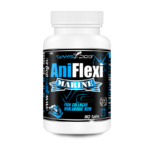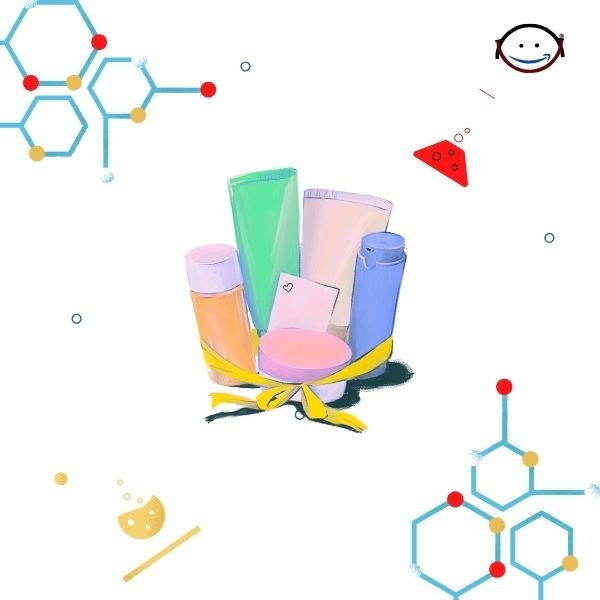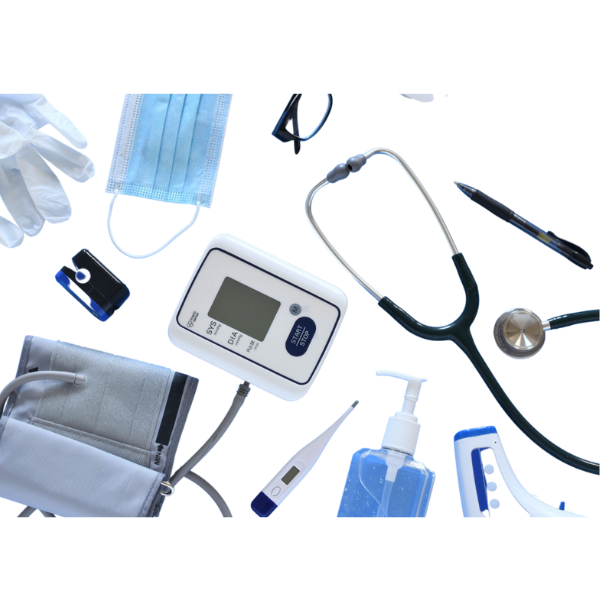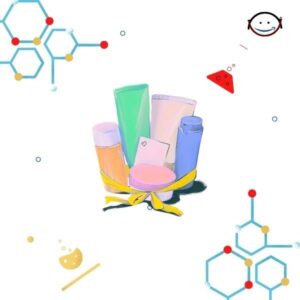Sort by:
17–20 of 20 Results
-
SaleSpectra 0.3%Spectra 0.3% is indicated for the treatment of single infection or mixed infections caused by two or more susceptible organisms. It can also be used for infections caused by organisms resistant to other antibiotics including Aminoglycosides, Penicillins and Cephalosporins.As antibacterial ... Read moreSpectra 0.3% is indicated for the treatment of single infection or mixed infections caused by two or more susceptible organisms. It can also be used for infections caused by organisms resistant to other antibiotics including Aminoglycosides, Penicillins and Cephalosporins.As antibacterial concentrations of Spectra 0.3% are obtained in serum and body tissues as well as in the urine following administration by mouth, Spectra 0.3% has been suggested for use in the treatment of a wide range of infections caused by susceptible organisms including infections of the urinary, respiratory and gastrointestinal tracts, gonorrhoea and septicaemia. The extensive tissue penetration of Spectra 0.3% combined with its enhanced antibacterial activity (including antipseudomonal activity), enables Spectra 0.3% to be used alone (pending sensitivity results) or in combination with an Aminoglycoside or with beta lactam antibiotics for instance when severe neutropenia is present or with an antibiotic active against anaerobes where the presence of bacteroides fragilis is suspected. Spectra 0.3% is indicated for the treatment of the following infections caused by sensitive bacteria: Severe systemic infections: e.g. septicaemia, bacteraemia, peritionitis, infections in immunosuppressed patients with haematological or solid tumors and in patients in intensive care unit with specific problems such as infected burns. Respiratory tract infections: Lobar and bronchopneumonia, acute and chronic bronchitis, acute exacerbation of cystic fibrosis, bronchiectasis, empyema. Urinary tract infections: Uncomplicated and complicated urethritis, cystitis, pyelonephritis, prostatitis, epididymitis. Skin and soft tissue infections: e.g. infected ulcers, wound infections, abscesses, cellulitis, otitis externa, erysipelas, infected burns. Gastro-intestinal infections: e.g. enteric fever, infective diarrhea. Infection of the biliary tract: e.g. cholangitis, cholecystitis, empyema of the gall bladder. Intra abdominal infections: e.g. peritonitis, intra abdominal abscesses. Bone and joint infection: Osteomyelitis, septic arthritis. Pelvic infections: e.g. salpingitis, endometritis, pelvic inflammatory diseases. Eye, ear, nose and throat infections: e.g. otitis media, sinusitis, mastoiditis, tonsillitis. Gonorrhoea: Including urethral, rectal and pharyngeal gonorrhoea caused by beta-lactamase producing organisms or organisms moderately sensitive to penicillin. Theropeutic Class4-Quinolone preparations, Anti-diarrhoeal Antimicrobial drugsPharmacologySpectra 0.3% is a synthetic fluoroquinolone. It has bactericidal activity against a wide range of gram-positive and gram-negative organisms. It inhibits bacterial DNA synthesis by binding with the bacterial enzyme-DNA gyrase and topoisomerase IV which are responsible for DNA supercoiling.Dosage of Spectra 0.3%General dosage recommendations: The dosage of the Spectra 0.3% is determined by the severity and type of infection, the sensitivity of the causative organism(s) and the age, weight and renal function of the patient.Adults: The dosage range for adults is 100-750 mg twice daily. In infections of the lower and upper urinary tract (depending on severity): 250-500 mg twice daily.In respiratory tract infections: 250-500mg twice daily for both upper and lower respiratory tract infections, depending on the severity. For the treatment of known Streptococcus pneumonia infection, the recommended dosage is 750 mg twice daily.In gonorrhea: A single dose of 250 or 500 mg.In the majority other infections: 500-750 mg twice daily should be administered.Cystic fibrosis: In adults with pseudomonal infections of the lower respiratory tract , the normal dose is 750 mg twice daily. As the pharmacokinetics of Spectra 0.3% remain unchanged in patients with cystic fibrosis, the low body weight of these patients would be fallen into consideration when determining dosage.Impaired renal function: Dosage adjustment is not usually required except in patients with several renal impairment. (serum creatinine >265 micro mol/l or creatinine clearance <20 ml/minute). If adjustment is necessary, this may be achieved by reducing the total daily dose by half, although monitoring of drug serum levels provide the most reliable basis for dose adjustment.Elderly: Although higher Spectra 0.3% serum levels are found in the elderly, no adjustment of dosage is necessary.Adeloscents and children: As with other drugs in its class, Spectra 0.3% has been shown to cause arthropathy in weight bearing joints of immature animals. Although the relevance of this to man is unknown, its use in children, growing children and growing adolescents is not recommended. However, where the benefit of using Spectra 0.3% is considered to outweigh the potential risk, the dosage should be 7.5-15 mg/kg/day depending upon the severity of infection, administered in two divided doses.Duration of treatment: The duration of treatment depends upon the severity of infection, clinical response and bacteriological findings.For acute infections: The usual treatment period is 5 to 10 days with Spectra 0.3% tablets. Generally treatment should be continued for three days after the signs and symptoms of the infection have disappeared.Extended-release tablet: In uncomplicated urinary tract infection (acute cystitis), the recommended dose of extended-release tablet is 1000 mg tablet once daily for three days. For IV infusion: Urinary Tract Infection: Mild to Moderate: 200 mg 12 hourly for 7-14 days; Severe or Complicated: 400 mg 12 hourly for 7-14 days Lower Respiratory Tract infection: Mild to Moderate: 400 mg 12 hourly for 7-14 days; Severe or Complicated: 400 mg 8 hourly for 7-14 days Nosocomial Pneumonia: Mild/Moderate/Severe: 400 mg 8 hourly for 10-14 days Skin and Skin Structure: Mild to Moderate: 400 mg 12 hourly for 7-14 days; Severe or Complicated: 400 mg 8 hourly for 7-14 days Bone and Joint Infection: Mild to Moderate: 400 mg 12 hourly for more than 4-6 weeks; Severe/Complicated: 400 mg 8 hourly for more than 4-6weeks Intraabdominal (Acute abdomen): Complicated: 400 mg 12 hourly for 7-14 days Acute Sinusitis: Mild/Moderate: 400 mg 12 hourly for 10 days Chronic Bacterial Prostatitis: Mild/Moderate: 400 mg 12 hourly for 28 Days. Administration of Spectra 0.3%Instruction for the use of Spectra 0.3% IV infusion- Check the bag for minute leaks by squeezing the inner bag firmly. If leaks are found, or if seal is not intact, discard the solution. Do not use if the solution is cloudy or a precipitate is present. Do not use flexible bags in series connections. Close flow control clamp of administration set. Remove cover from port at bottom of bag. Insert piercing pin of administration set into port with a twisting motion until the pin is firmly seated. Suspend bag from hanger. Squeeze and release drip chamber to establish proper fluid level in chamber during infusion of Spectra 0.3% IV infusion. Open flow control clamp to expel air from set.Close clamp. Regulate rate of administration with flow control clamp. Interaction of Spectra 0.3%Concurrent administration of Spectra 0.3% should be avoided with Magnesium or Aluminum containing antacids or sucralfate or with other products containing Calcium, Iron or Zinc. These products may be taken two hours after or six hours before Spectra 0.3%. Spectra 0.3% should not be taken concurrently with milk or other dairy products, since absorption of Spectra 0.3% may be significantly reduced. Dietary calcium is a part of a meal, however, does not significantly affect the absorption of Spectra 0.3%.ContraindicationsPatients with a history of hypersensitivity to Spectra 0.3% or to other quinolones.Side Effects of Spectra 0.3%Gastrointestinal disturbances e.g. nausea, diarrhoea, vomiting, dyspepsia, abdominal pain. Disturbances of the central nervous system e.g. headache, dizziness, tiredness, confusion, convulsion & risk of retinal detachment. Hypersensitivity reactions e.g. skin rash (very rarely Stevens-Johnson syndrome and toxic epidermal necrolysis), pruritus and possible systemic reactions. The other less reported reactions are joint pain, mild photosensitivity and transient increase in liver enzymes (particularly in patients with previous liver damage), serum bilirubin, urea or creatinine levels. Risk of hypoglycemia & mental health adverse effects.Pregnancy & LactationThere are no adequate and well-controlled studies in pregnant women. Spectra 0.3% should be used during pregnancy only if the potential benefit justifies the potential risk to the fetus and mother. Spectra 0.3% is excreted in human milk. Due to the potential risk of articular damage, Spectra 0.3% should not be used during lactation.Precautions & WarningsIt should be used with caution in patients with suspected or known CNS disorders such as arteriosclerosis or epilepsy or other factors which predispose to seizures and convulsion. Spectra 0.3% may be taken with or without meals and to drink fluids liberally. Concurrent administration of Spectra 0.3% should be avoided with magnesium / aluminium antacids, or sucralfate or with other products containing calcium, iron and zinc. These products may be taken two hours after or six hours before Spectra 0.3%. Spectra 0.3% should not be taken concurrently with milk or yogurt alone, since absorption of Spectra 0.3% may be significantly reduced. Dietary calcium is a part of a meal, however, does not significantly affect the Spectra 0.3% absorption. Overdose Effects of Spectra 0.3%Overdose following Spectra 0.3% administration may lead to seizures, hallucinations, confusion, abdominal discomfort, renal and hepatic impairment as well as crystalluria, haematuria, & reversible renal toxicity.Storage ConditionsKeep below 30?C temperature, protected from light & moisture. Keep out of the reach of children.Use In Special PopulationsAlthough effective in clinical trials, Spectra 0.3% is not a drug of first choice in pediatric population.Drug Classes4-Quinolone preparations, Anti-diarrhoeal Antimicrobial drugsMode Of ActionSpectra 0.3% is a synthetic quinolone anti-infective agent. Ciprofloxacion has broad spectrum of activity. It is active against most gram negative aerobic bacteria including Enterobacteriaceae and Pseudomonas aeruginosa. Spectra 0.3% is also active against gram-positive aerobic bacteria including penicillinase producing, non penicillinase producing, and methicillin resistant staphylococci, although many strains of streptococci are relatively resistant to the drug. The bactericidal action of Spectra 0.3% results from interference with the enzyme DNA gyrase needed for the synthesis of bacterial DNA. Following oral administration it is rapidly and well absorbed from the G.I. tract. It is widely distributed into the body tissues and fluids. The half life is about 3.5 hours. About 30% to 50% of an oral dose of Spectra 0.3% is excreted in the urine within 24 hours as unchanged drug and biologically active metabolites.PregnancyReproduction studies performed in mice, rats and rabbits using parenteral and oral administration did not reveal any evidence of teratogenicity, impairment of fertility or impairment of peri/post natal development. However as with other quinolones, Spectra 0.3% has been shown to cause arthropathy in immature animals and therefore its use during pregnancy is not recommended. Studies in rats have indicated that Spectra 0.3% is secreted in milk, administration to nursing mothers is thus not recommended.Pediatric UsesAlthough effective in clinical trials, Spectra 0.3% is not a drug of first choice in pediatric population.Sku: 1736093631-497
Spectra0.3%
₦2,206.60Original price was: ₦2,206.60.₦1,986.05Current price is: ₦1,986.05.₦2,206.60Original price was: ₦2,206.60.₦1,986.05Current price is: ₦1,986.05. Add to basket Quick View -
SaleSpectra 500 mgSpectra 500 mg is indicated for the treatment of single infection or mixed infections caused by two or more susceptible organisms. It can also be used for infections caused by organisms resistant to other antibiotics including Aminoglycosides, Penicillins and Cephalosporins.As antibacterial ... Read moreSpectra 500 mg is indicated for the treatment of single infection or mixed infections caused by two or more susceptible organisms. It can also be used for infections caused by organisms resistant to other antibiotics including Aminoglycosides, Penicillins and Cephalosporins.As antibacterial concentrations of Spectra 500 mg are obtained in serum and body tissues as well as in the urine following administration by mouth, Spectra 500 mg has been suggested for use in the treatment of a wide range of infections caused by susceptible organisms including infections of the urinary, respiratory and gastrointestinal tracts, gonorrhoea and septicaemia. The extensive tissue penetration of Spectra 500 mg combined with its enhanced antibacterial activity (including antipseudomonal activity), enables Spectra 500 mg to be used alone (pending sensitivity results) or in combination with an Aminoglycoside or with beta lactam antibiotics for instance when severe neutropenia is present or with an antibiotic active against anaerobes where the presence of bacteroides fragilis is suspected. Spectra 500 mg is indicated for the treatment of the following infections caused by sensitive bacteria: Severe systemic infections: e.g. septicaemia, bacteraemia, peritionitis, infections in immunosuppressed patients with haematological or solid tumors and in patients in intensive care unit with specific problems such as infected burns. Respiratory tract infections: Lobar and bronchopneumonia, acute and chronic bronchitis, acute exacerbation of cystic fibrosis, bronchiectasis, empyema. Urinary tract infections: Uncomplicated and complicated urethritis, cystitis, pyelonephritis, prostatitis, epididymitis. Skin and soft tissue infections: e.g. infected ulcers, wound infections, abscesses, cellulitis, otitis externa, erysipelas, infected burns. Gastro-intestinal infections: e.g. enteric fever, infective diarrhea. Infection of the biliary tract: e.g. cholangitis, cholecystitis, empyema of the gall bladder. Intra abdominal infections: e.g. peritonitis, intra abdominal abscesses. Bone and joint infection: Osteomyelitis, septic arthritis. Pelvic infections: e.g. salpingitis, endometritis, pelvic inflammatory diseases. Eye, ear, nose and throat infections: e.g. otitis media, sinusitis, mastoiditis, tonsillitis. Gonorrhoea: Including urethral, rectal and pharyngeal gonorrhoea caused by beta-lactamase producing organisms or organisms moderately sensitive to penicillin. Theropeutic Class4-Quinolone preparations, Anti-diarrhoeal Antimicrobial drugsPharmacologySpectra 500 mg is a synthetic fluoroquinolone. It has bactericidal activity against a wide range of gram-positive and gram-negative organisms. It inhibits bacterial DNA synthesis by binding with the bacterial enzyme-DNA gyrase and topoisomerase IV which are responsible for DNA supercoiling.Dosage of Spectra 500 mgGeneral dosage recommendations: The dosage of the Spectra 500 mg is determined by the severity and type of infection, the sensitivity of the causative organism(s) and the age, weight and renal function of the patient.Adults: The dosage range for adults is 100-750 mg twice daily. In infections of the lower and upper urinary tract (depending on severity): 250-500 mg twice daily.In respiratory tract infections: 250-500mg twice daily for both upper and lower respiratory tract infections, depending on the severity. For the treatment of known Streptococcus pneumonia infection, the recommended dosage is 750 mg twice daily.In gonorrhea: A single dose of 250 or 500 mg.In the majority other infections: 500-750 mg twice daily should be administered.Cystic fibrosis: In adults with pseudomonal infections of the lower respiratory tract , the normal dose is 750 mg twice daily. As the pharmacokinetics of Spectra 500 mg remain unchanged in patients with cystic fibrosis, the low body weight of these patients would be fallen into consideration when determining dosage.Impaired renal function: Dosage adjustment is not usually required except in patients with several renal impairment. (serum creatinine >265 micro mol/l or creatinine clearance <20 ml/minute). If adjustment is necessary, this may be achieved by reducing the total daily dose by half, although monitoring of drug serum levels provide the most reliable basis for dose adjustment.Elderly: Although higher Spectra 500 mg serum levels are found in the elderly, no adjustment of dosage is necessary.Adeloscents and children: As with other drugs in its class, Spectra 500 mg has been shown to cause arthropathy in weight bearing joints of immature animals. Although the relevance of this to man is unknown, its use in children, growing children and growing adolescents is not recommended. However, where the benefit of using Spectra 500 mg is considered to outweigh the potential risk, the dosage should be 7.5-15 mg/kg/day depending upon the severity of infection, administered in two divided doses.Duration of treatment: The duration of treatment depends upon the severity of infection, clinical response and bacteriological findings.For acute infections: The usual treatment period is 5 to 10 days with Spectra 500 mg tablets. Generally treatment should be continued for three days after the signs and symptoms of the infection have disappeared.Extended-release tablet: In uncomplicated urinary tract infection (acute cystitis), the recommended dose of extended-release tablet is 1000 mg tablet once daily for three days. For IV infusion: Urinary Tract Infection: Mild to Moderate: 200 mg 12 hourly for 7-14 days; Severe or Complicated: 400 mg 12 hourly for 7-14 days Lower Respiratory Tract infection: Mild to Moderate: 400 mg 12 hourly for 7-14 days; Severe or Complicated: 400 mg 8 hourly for 7-14 days Nosocomial Pneumonia: Mild/Moderate/Severe: 400 mg 8 hourly for 10-14 days Skin and Skin Structure: Mild to Moderate: 400 mg 12 hourly for 7-14 days; Severe or Complicated: 400 mg 8 hourly for 7-14 days Bone and Joint Infection: Mild to Moderate: 400 mg 12 hourly for more than 4-6 weeks; Severe/Complicated: 400 mg 8 hourly for more than 4-6weeks Intraabdominal (Acute abdomen): Complicated: 400 mg 12 hourly for 7-14 days Acute Sinusitis: Mild/Moderate: 400 mg 12 hourly for 10 days Chronic Bacterial Prostatitis: Mild/Moderate: 400 mg 12 hourly for 28 Days. Administration of Spectra 500 mgInstruction for the use of Spectra 500 mg IV infusion- Check the bag for minute leaks by squeezing the inner bag firmly. If leaks are found, or if seal is not intact, discard the solution. Do not use if the solution is cloudy or a precipitate is present. Do not use flexible bags in series connections. Close flow control clamp of administration set. Remove cover from port at bottom of bag. Insert piercing pin of administration set into port with a twisting motion until the pin is firmly seated. Suspend bag from hanger. Squeeze and release drip chamber to establish proper fluid level in chamber during infusion of Spectra 500 mg IV infusion. Open flow control clamp to expel air from set.Close clamp. Regulate rate of administration with flow control clamp. Interaction of Spectra 500 mgConcurrent administration of Spectra 500 mg should be avoided with Magnesium or Aluminum containing antacids or sucralfate or with other products containing Calcium, Iron or Zinc. These products may be taken two hours after or six hours before Spectra 500 mg. Spectra 500 mg should not be taken concurrently with milk or other dairy products, since absorption of Spectra 500 mg may be significantly reduced. Dietary calcium is a part of a meal, however, does not significantly affect the absorption of Spectra 500 mg.ContraindicationsPatients with a history of hypersensitivity to Spectra 500 mg or to other quinolones.Side Effects of Spectra 500 mgGastrointestinal disturbances e.g. nausea, diarrhoea, vomiting, dyspepsia, abdominal pain. Disturbances of the central nervous system e.g. headache, dizziness, tiredness, confusion, convulsion & risk of retinal detachment. Hypersensitivity reactions e.g. skin rash (very rarely Stevens-Johnson syndrome and toxic epidermal necrolysis), pruritus and possible systemic reactions. The other less reported reactions are joint pain, mild photosensitivity and transient increase in liver enzymes (particularly in patients with previous liver damage), serum bilirubin, urea or creatinine levels. Risk of hypoglycemia & mental health adverse effects.Pregnancy & LactationThere are no adequate and well-controlled studies in pregnant women. Spectra 500 mg should be used during pregnancy only if the potential benefit justifies the potential risk to the fetus and mother. Spectra 500 mg is excreted in human milk. Due to the potential risk of articular damage, Spectra 500 mg should not be used during lactation.Precautions & WarningsIt should be used with caution in patients with suspected or known CNS disorders such as arteriosclerosis or epilepsy or other factors which predispose to seizures and convulsion. Spectra 500 mg may be taken with or without meals and to drink fluids liberally. Concurrent administration of Spectra 500 mg should be avoided with magnesium / aluminium antacids, or sucralfate or with other products containing calcium, iron and zinc. These products may be taken two hours after or six hours before Spectra 500 mg. Spectra 500 mg should not be taken concurrently with milk or yogurt alone, since absorption of Spectra 500 mg may be significantly reduced. Dietary calcium is a part of a meal, however, does not significantly affect the Spectra 500 mg absorption. Overdose Effects of Spectra 500 mgOverdose following Spectra 500 mg administration may lead to seizures, hallucinations, confusion, abdominal discomfort, renal and hepatic impairment as well as crystalluria, haematuria, & reversible renal toxicity.Storage ConditionsKeep below 30?C temperature, protected from light & moisture. Keep out of the reach of children.Use In Special PopulationsAlthough effective in clinical trials, Spectra 500 mg is not a drug of first choice in pediatric population.Drug Classes4-Quinolone preparations, Anti-diarrhoeal Antimicrobial drugsMode Of ActionSpectra 500 mg is a synthetic quinolone anti-infective agent. Ciprofloxacion has broad spectrum of activity. It is active against most gram negative aerobic bacteria including Enterobacteriaceae and Pseudomonas aeruginosa. Spectra 500 mg is also active against gram-positive aerobic bacteria including penicillinase producing, non penicillinase producing, and methicillin resistant staphylococci, although many strains of streptococci are relatively resistant to the drug. The bactericidal action of Spectra 500 mg results from interference with the enzyme DNA gyrase needed for the synthesis of bacterial DNA. Following oral administration it is rapidly and well absorbed from the G.I. tract. It is widely distributed into the body tissues and fluids. The half life is about 3.5 hours. About 30% to 50% of an oral dose of Spectra 500 mg is excreted in the urine within 24 hours as unchanged drug and biologically active metabolites.PregnancyReproduction studies performed in mice, rats and rabbits using parenteral and oral administration did not reveal any evidence of teratogenicity, impairment of fertility or impairment of peri/post natal development. However as with other quinolones, Spectra 500 mg has been shown to cause arthropathy in immature animals and therefore its use during pregnancy is not recommended. Studies in rats have indicated that Spectra 500 mg is secreted in milk, administration to nursing mothers is thus not recommended.Pediatric UsesAlthough effective in clinical trials, Spectra 500 mg is not a drug of first choice in pediatric population.Sku: 1736094149-621
Spectra500 mg
₦560.45Original price was: ₦560.45.₦504.35Current price is: ₦504.35. -
SaleVidox 100 mgVidox 100 mg is indicated in the following infections caused by susceptible microorganisms: Respiratory tract infections: Pneumonia, influenza, sinusitis, bronchitis, tonsillitis, tracheitis. Gastrointestinal tract infections: Cholera, traveler's diarrhea, shigella dysentery, acute intestinal amebiasis. ... Read moreVidox 100 mg is indicated in the following infections caused by susceptible microorganisms: Respiratory tract infections: Pneumonia, influenza, sinusitis, bronchitis, tonsillitis, tracheitis. Gastrointestinal tract infections: Cholera, traveler's diarrhea, shigella dysentery, acute intestinal amebiasis. Chlamydial infections: Lympho-granuloma venereum, psittacosis, trachoma. Sexually transmitted diseases: Non gonococcal urethritis, acute pelvic inflammatory disease, uncomplicated urethral and endocervical or rectal infections, gonorrhoea, syphilis, pyelonephritis, cystitis. Other infections: Impetigo, furunculosis, inclusion conjunctivitis, brucellosis, tularemia, cellulitis, acne and Q-fever. Theropeutic ClassTetracycline group of drugsPharmacologyVidox 100 mg is a semisynthetic tetracycline antibiotic with broad spectrum activity. It is primarily a bacteriostatic antibiotic. It has a similar spectrum of activity to other tetracyclines but in particular is more active against Staphylococcus aureus and Nocardia. The drug is often active against penicillin-resistant strains of Staphylococcus aureus and against strains of those organisms that are resistant to other Tetracyclines. Certain Gram-negative strains of E. coli, Proteus mirabilis and Klebsiella, which are often resistant to Tetracycline, may be sensitive to Doxycycline. In addition, 70-90% of the various anaerobes are sensitive to Doxycycline and Bacteroides fragilis is more likely to be sensitive to Doxycycline than to other tetracyclines.Doxycycline is active against most strains of Haemophilus influenzaeand is particularly useful for infections with H. ducreyi, Actinomyces, Brucella and Vibrio cholerae. It is also active against Nocardia, Chlamydia, Mycoplasma and a wide range of Rickettsiae. Doxycycline is active against spirochetes such as Borellia recurrentis, Treponema pallidum and Treponema pertenue. It is also active against Plasmodium falciparum.Dosage & Administration of Vidox 100 mgUsual dose: 200 mg on first day, then 100 mg daily for 7-10 days.Severe infections (including refractory urinary tract infections): 200 mg daily for 10 days. Acne: 100 mg daily. Uncomplicated genital chlamydia, non-gonococcal urethritis: 100 mg twice daily for 7-21 days (14-21 days in pelvic inflammatory disease).Dosage of Vidox 100 mgUsual dose: 200 mg on first day, then 100 mg daily for 7-10 days.Severe infections (including refractory urinary tract infections): 200 mg daily for 10 days. Acne: 100 mg daily. Uncomplicated genital chlamydia, non-gonococcal urethritis: 100 mg twice daily for 7-21 days (14-21 days in pelvic inflammatory disease).Administration of Vidox 100 mgCapsules should be swallowed whole with plenty of fluid during meals while sitting or standing.Interaction of Vidox 100 mgAbsorption of tetracyclines is impaired by antacid containing aluminium, calcium or magnesium, and iron containing preparation. Absorption of tetracyclines is also impaired by bismuth salicylate. Barbiturates, carbamazepine and phenytoin decrease half-life of doxycycline. Concurrent use of tetracyclines may render oral contraceptive less effective. Patients who are on anticoagulant therapy may require downward adjustment of their anticoagulant dosages. It is advisable to avoid giving tetracyclines in conjunction with penicillin.ContraindicationsDoxycycline is contraindicated to the patients who have shown hypersensitivity to any of the tetracyclines. Doxycycline is contraindicated to the children under 8 years of age. It is also contraindicated to pregnant women and to the lactating mothers.Side Effects of Vidox 100 mgNausea, vomiting, diarrhoea, skin rashes, hemolytic anaemia, eosinophilia may be reported.Pregnancy & LactationDoxycycline should be avoided in pregnant women, because of the risk of both staining and effect on bone growth in the foetus. Doxycyclines enter breast milk, and mothers taking these drugs should not breastfeed their child.Precautions & WarningsThe use of drugs of the tetracycline class during tooth development (last half of pregnancy, infancy and childhood to the age of 8 years) may cause permanent discoloration of teeth. Tetracyclines drugs, therefore should not be used in this age group.Storage ConditionsKeep all medicines out of reach of children. Store in a cool and dry place, protected from light.Use In Special PopulationsNeonates and children: Doxycycline may cause permanent discoloration of the teeth and so is contraindicated for neonates and children under 12 years.Elderly: No special precautions are necessary in the elderly.Drug ClassesTetracycline group of drugsMode Of ActionVidox 100 mg is a semisynthetic tetracycline antibiotic with broad spectrum activity. It is primarily a bacteriostatic antibiotic. It has a similar spectrum of activity to other tetracyclines but in particular is more active against Staphylococcus aureus and Nocardia. The drug is often active against penicillin-resistant strains of Staphylococcus aureus and against strains of those organisms that are resistant to other Tetracyclines. Certain Gram-negative strains of E. coli, Proteus mirabilis and Klebsiella, which are often resistant to Tetracycline, may be sensitive to Doxycycline. In addition, 70-90% of the various anaerobes are sensitive to Doxycycline and Bacteroides fragilis is more likely to be sensitive to Doxycycline than to other tetracyclines.Doxycycline is active against most strains of Haemophilus influenzaeand is particularly useful for infections with H. ducreyi, Actinomyces, Brucella and Vibrio cholerae. It is also active against Nocardia, Chlamydia, Mycoplasma and a wide range of Rickettsiae. Doxycycline is active against spirochetes such as Borellia recurrentis, Treponema pallidum and Treponema pertenue. It is also active against Plasmodium falciparum.PregnancyDoxycycline should be avoided in pregnant women, because of the risk of both staining and effect on bone growth in the foetus. Doxycyclines enter breast milk, and mothers taking these drugs should not breastfeed their child.Sku: 1736093439-457
Vidox100 mg
₦110.00Original price was: ₦110.00.₦99.00Current price is: ₦99.00. -
SaleZeal 10 mg/5 mlZeal 10 mg/5 ml is indicated in zinc deficiency and/or zinc losing conditions. Zinc deficiency can occur as a result of inadequate diet or malabsorption. Excessive loss of zinc can occur in trauma, burns, diarrhoea and protein losing conditions. A zinc supplement is given until clinical improvement occurs but it may need to be continued in severe malabsorption, metabolic disease or in zinc losing states.Theropeutic ClassSpecific mineral preparationsPharmacologyZinc sulphate monohydrate is an essential trace element and is involved in a number of body enzyme systems. The body needs zinc for normal growth and health. Zinc is also vital for sexual maturation and reproduction, dark vision adaptation, olfactory and gustatory activity, insulin storage & release and for a variety of host immune defenses. Zinc deficiency may lead to impaired immune function, delayed wound healing, a decrease in sense of taste and smell, a reduced ability to fight infections, poor night vision, increased risk of abortion, alopecia, mental lethargy, skin changes and poor development of reproductive organs.Dosage of Zeal 10 mg/5 mlChild under 10 kg: 5 ml (1 teaspoonful) 2 times daily after food.Child between 10-30 kg: 10 ml (2 teaspoonfuls) 1-3 times daily after food.Adults and child over 30 kg: 20 ml (4 teaspoonfuls) 1-3 times daily after food.This drug is most effective if they are taken at least 1 hour before or 2 hour after meals. However, if causes stomach upset, this may be taken with a meal.Administration of Zeal 10 mg/5 mlFor dispersible tablet- Place the tablet in a teaspoon Add adequate amount of water Let the tablet dissolve completely Give the entire spoonful solution Interaction of Zeal 10 mg/5 mlConcomitant intake of a tetracycline and zinc may decrease the absorption of both the tetracycline and zinc. Similarly concomitant administration of zinc and quinolone drug may also decrease the absorption of both. Concomitant intake of penicillamine and zinc may decrese absorption of zinc.ContraindicationsIt is contraindicated in those who are hypersensitive to any component of the ingredient of this preparation.Side Effects of Zeal 10 mg/5 mlZinc may cause nausea, vomiting, diarrhoea, stomach upset, heartburn and gastritis.Pregnancy & LactationThe safety of this product in human pregnancy has not been established. Zinc crosses the placenta and is present in breast milk.Precautions & WarningsIn acute renal failure, zinc accumulation may occur in body; so dose adjustment is needed.Storage ConditionsKeep in a dry place away from light and heat. Keep out of the reach of children.Sku: 1736091675-89
Zeal10 mg/5 ml
₦1,658.25Original price was: ₦1,658.25.₦1,492.15Current price is: ₦1,492.15.₦1,658.25Original price was: ₦1,658.25.₦1,492.15Current price is: ₦1,492.15. Add to basket Quick View






 No products in the cart.
No products in the cart.